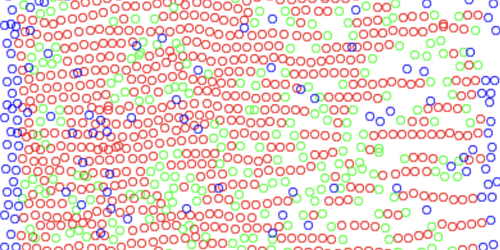Stringy Particles in Complex Plasmas
When micron-sized particles inhabit a plasma, they become charged and, like the plasma’s electrons and ions, become susceptible to electric fields. Being heavier, the particles respond more sluggishly. They are also more susceptible to gravity. So-called dusty plasmas exhibit collective behaviors, including the congregation of particles into string-like clusters (SLCs) when an external electric field is applied. SLCs were first reported 15 years ago, but researchers remain in the dark as to exactly how they develop. Now Eshita Joshi of the German Aerospace Center and her colleagues have figured out what forces are responsible for their formation [1].
Subjecting a dusty plasma to an electric field causes the ions to cluster on one side of the particles, creating a charge imbalance. This imbalance reduces the repulsive force between the particles along the direction of the electric field. Conceivably, that reduction in repulsion could be sufficient to align particles into SLCs. However, theoretical predictions indicate that ions can also form SLCs via interparticle attraction. Indeed, long-range attraction is responsible for forming SLCs in the liquid analogs of dusty plasmas: electrorheological fluids.
To determine which interparticle forces predominate in SLCs, Joshi and her colleagues performed an experiment in the Plasmakristall-4 facility aboard the International Space Station. They also ran computer simulations. In both approaches, the plasma was subjected to an AC electric field whose frequency, 500 Hz, was too high for the particles to respond to the oscillations but low enough for the ions to respond. They also periodically switched off the field to allow the SLCs to dissolve and reform. Both approaches agreed: reduced repulsion was sufficient for the strings to develop.
–Charles Day
Charles Day is a Senior Editor for Physics Magazine.
References
- E. Joshi et al., “Recrystallization in string-fluid complex plasmas,” Phys. Rev. Res. 5, L012030 (2023).




